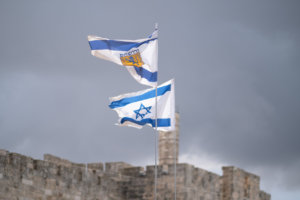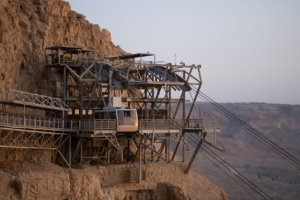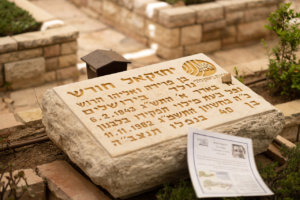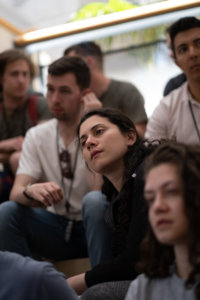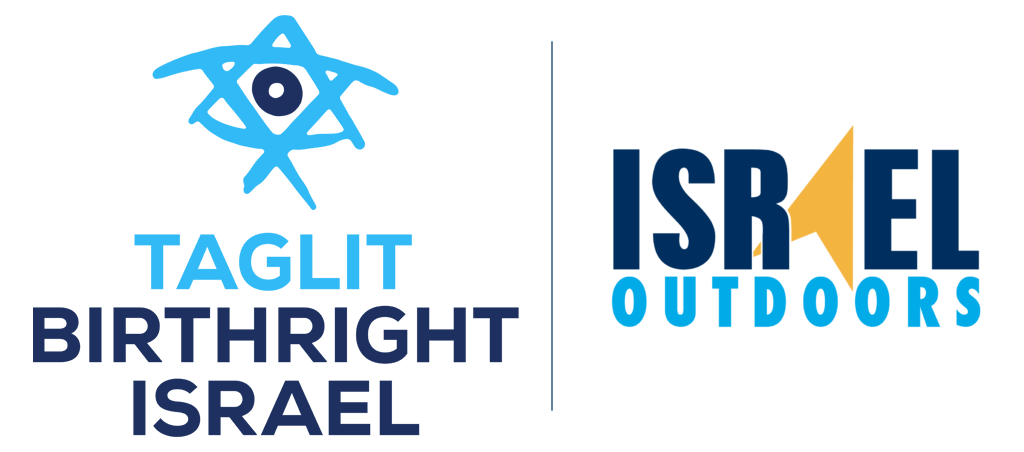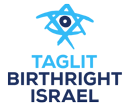TL-46-2/577 Update 4
Days 5-8 updates
Day 5
On Friday, we started our first full day in Jerusalem with a drive across the city, moving away from the modern high-rise apartment buildings and into the ancient, historic core: the Old City. We arrived at Jaffa Gate, navigating along the Armenian Quarter on our way to the Jewish Quarter. One moment, we passed by construction work, while another moment we were at the Davidson Center to learn about ancient archaeology. In other words, we saw the timelines of history, all mixed together into a dense, overlapping urban core. There was a Roman-era road (the Cardo) alongside a brand-new Korean restaurant, next to synagogues and yeshivas from various communities; it was an embodiment of the continual renewal and refraction of Jewish life. Our time in the Old City came to a climax with our time at the Western Wall, before we exited through the Dung Gate.
We had lunch on our own at Mahane Yehuda. It was a mad rush: from the totally secular to the deeply religious, everyone squeezed past one another en route to finish shopping for Shabbat. Some of us went to have falafel as a group, while others of us sat down for coffee alone, before coming back together to head to our hotel and prepare for Shabbat. We had joined the group from the United States and Canada, and had become unified; with Israelis having joined our trip, we continued to be a single group, enjoying the Taglit experience through exchange and dialogue.
One of the ways to honor Shabbat is to set aside one’s finest things for use on Shabbat. Many of us had packed special clothes for the day, and when we came together before sunset we were ready to sanctify Shabbat. We went through a moment of candle-lighting and prayer, then joined together as a family for dinner.
Day 6
On Saturday, we had a later breakfast — an opportunity to enjoy some rest during Shabbat — and then went to the Israel Museum. There, we navigated thousands of years of history from all across the world. This was the activity that people asked the most questions about so far, but the Israel Museum overwhelmed us with its truly world-class collections. Some of us took photos together, enjoying the atmosphere of the day in a secular manner, while others of us were cautious to refrain from Shabbat prohibitions. Yet we all shared the experience, talking and learning about what Shabbat is and what it means to each of us.
After the Israel Museum, we returned to the hotel and listened to a talk by Iftach Burman. He explained the background and stakeholders in the many dimensions of conflict in the Middle East and North Africa, from the Sunni-Shia divide to granular, local details from town to town in the State of Israel. It was a remarkable journey across space and time that went by remarkably quickly.
Lastly, we ended Shabbat with the Havdalah ceremony and then had time on our own. Many of us went out to enjoy the area around the hotel, while others of us recharged ahead of the trip to the Negev and the sunrise hike.
Day 7
Sunday morning, we had breakfast in Jerusalem and then prepared for our trip to Yad Vashem later. We discussed scenarios: what would we do if we found ourselves in the types of situations that Holocaust survivors experienced and recorded? There were no right answers or wrong answers — it was just a moment to put ourselves into the shoes of people who survived under a regime of systematic murder. Moments of raw honesty — of grief, of death, of abuse, and more that participants had experienced — came to the surface, and we supported each other through the challenges of reliving trauma.
We went to the national cemetery at Mount Herzl. It is a necessity for any Taglit trip, but the overwhelming majority of fellow visitors are generally soldiers undergoing their training. As part of training for Israeli soldiers, it is required to visit heritage sites and national monuments to understand not only how to fight, but what to fight for. The cemetery is organized into areas, with each one dedicated to particular events or periods, and we had time to learn about the lives and sacrifices of people from several of them. Among them was the memorial to Ethiopian Jews who perished when making the journey to departure points for aliyah to the State of Israel, where we drew together as a group and sang Hatikvah, the national anthem of the State of Israel.
Across the way was Yad Vashem, where we went next for a guided tour. It was a devastating experience — a building, an institution, an archive, and more — all dedicated to one of the most devastating things to ever happen in human history. It is hard to put more of it into words in a post about the overall trip. It was an experience that is in many ways separate from the trip, both in space and time, but also in structure. There are professionally trained specialist guides at Yad Vashem who take over for about an hour and a half to educate us. Yad Vashem was a trip within a trip.
Afterward, we exited Jerusalem on our way to Kfar Hanokdim. We arrived at night and went directly to a session on Bedouin hospitality and culture. For many of us, it was the first time in our lives to sit down with Arab or Muslim educators to learn about their life and society. Taglit may focus on Jewishness and Zionism, but the State of Israel is the last truly mixed county in this entire part of the world. Learning about Zionism also means learning about the many communities who call this land home, and who carry this citizenship. Bedouin are an important entry point into learning about Arab-ness and Muslim-ness, as their society is profoundly conservative at maintaining culture, tradition, and beliefs — including some that pre-date Islam.
Day 8
We slept for a few hours before we were awakened for a sunrise hike to the summit of Masada. After crisscrossing some of the most traumatic annihilations and vibrant successes in Jewish history for several days, seeing the palatial fortress structures at Masada conveyed to us how deep our roots are in human history, and closely embedded this history is in the land of Eretz Yisrael. We also learned about the politics, lifestyles, and more of Jews at the inflection point of precarious self-rule under Roman domination, and devastating exile after the destruction of the Second Temple. In many ways, that inflection point can be connected to Masada.
From there, we went to the Dead Sea. Some of us floated in the water, some of us grabbed refreshments at the Dead Sea Mall, and others of us simply relaxed in the sunshine. Afterward, we had lunch on our own at Arad. This small locality in the Negev is generally considered unimpressive, but it is one of the most special points of connection in all of the State of Israel. It has been mostly built up by local Bedouin and immigrants seeking affordable real estate. Here, you hear Arabic, Yiddish, Hebrew, English, Amharic, and other languages all overlap with one another. Devoutly religious Jewish families walk alongside equally faith-oriented Muslim families.
Our day concluded at Kibbutz Gvulot, near the border with Egypt. We had a magical evening, learning about what it was like to not only establish agricultural self-sufficiency but also a sense of community in areas that are almost completely uninhabited because of the extraordinarily severe climate. The kibbutzim not only achieved this: they also differentiated into profound, refined systems of thought, and specializations into unique sectors of services, manufacturing, and agricultural output. Although the kibbutzim have generally privatized now, we were guided through the history of how they began and everything they have achieved, preparing our food together before celebrating for hours under the open sky.
